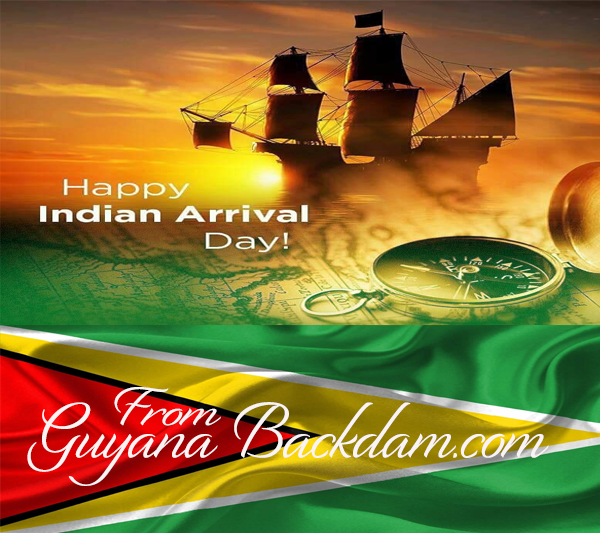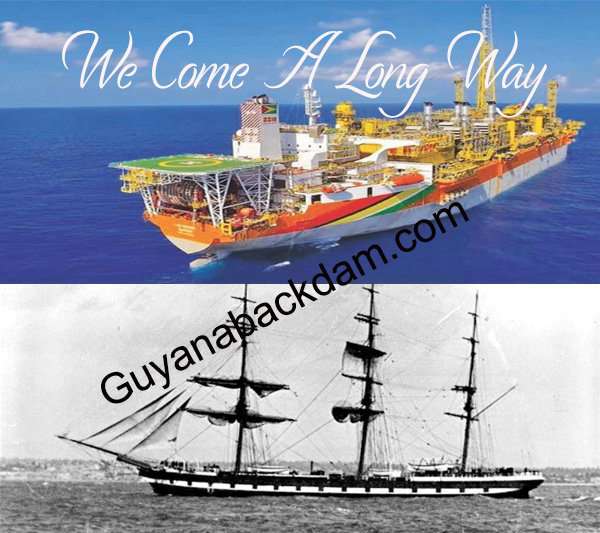Guyana is a country of diversities where the governing party of the day has espoused, embraced and propagated the brotherhood of man as the ideal philosophy of existence. Thus its leaders, always guided by their Founder-Leader Dr. Cheddi Jagan, have always encouraged the communities they serve – across every divide, to honour their ancestral traditions because roots are important for a nation to grow and flower. Diversities make a richer tapestry of acculturated fabric in the existence of mankind and the wellbeing of nations and everyone has a right to take pride in their ancestral traditions and mores.
The initiative of The Indian Diaspora Council (IDC) in providing Diasporic Indians a platform to honour our ancestors, create the synergies to strengthen our traditional values and mores, and build cultural stairways for future generations of Indians to reach for the stars, with roots yet implanted in the mother earth that has carved the destiny of the Indians of the Diaspora should be applauded..
The “Times of India” reported in January, 2016 that a survey conducted by the UN Department of Economic and Social Affairs (DESA) concluded that India has the largest Diaspora population in the world.
According to the report, in 2015 an estimated 16 million people from India were domiciled outside of India, in countries scattered around the world, mainly in North America and Europe. These migrants are termed Non-Resident Indians (NRIs).
However, as in the case of Guyana, there is another tier of Indian Diasporeans; and these are designated People of Indian Origins (PIOs). The PIOs, when included in the estimated Indian population living worldwide outside of India, numbers an approximate 20 million.
The PIOs are the descendants of Indians who had migrated under different circumstances to various parts of the world. In the case of Guyana and some other countries, Indians migrated as indentured labourers, mainly to work in sugar cane fields.
Peter Rohoman states in his “Centenary History of the East Indians in British Guiana 1838-1938”
“It will be the author’s main purpose to prove by the incontestable evidence of facts that Indian Immigration has not only been the salvation of the colony at a most critical juncture in its history, when after the abolition of Negro slavery, there was a general trek away from the plantations, resulting in the economic structure of the Colony being shaken to its very foundations through the lack of a dependable labour supply, but that the Indians themselves have proved to be the most valuable assets to the industrial welfare of the Colony as is unaided efforts, of the rice and cattle industries.”
After emancipation and the need to replace the freed slaves who trekked away from the sugar plantations, the success of an already existing transfer of Indian labour overseas to Mauritius and Bourbon encouraged, in 1837, John Gladstone and John Moss, who had interests in the colony of British Guiana, to propose to Lord Glenelg to convey, by ship, Indian labour from Bengal to Demerara. With Lord Glenelg’s sanction, the term of indenture was agreed on for five years, on the completion of which the indentured labourer was entitled to repatriation by his employers.
Thus began the Indian exodus to British Guiana. There is reason to believe that such immigration was enforced on the majority of labourers through deceit, kidnappings, and forcible confinement before embarkation. They thought they were going to a ‘land of milk and honey’; instead they had bartered their freedom for a life of such terrible servility that it was considered another form of slavery, into an existence of penury so harsh that they were treated as less than animals.
On the 5th May 1838, after a voyage under grossly dehumanizing conditions lasting 90 days, the “Hesperus” arrived in British Guiana with its living cargo. Of the 155 men, 5 women, and 10 children, 14 died on the journey and were dumped at sea without traditional ceremonies, which were of utmost importance to Indians.
The “Whitbly”, after sailing for 114 days, landed the same month with 263 “items” of cargo amidst similar conditions as obtained aboard the “Hesperus”.
However, the inhuman conditions under which indentured Indians were bonded in the colonies prompted the Indian National Congress, which spearheaded the Independence struggle, led by Jawaharlal Nehru and Mahatma Gandhi, to eventually force the cessation of the Indian indentured labour system in 1917.
The dehumanizing conditions under which our ancestors lived and toiled were in breach of contractual obligations and many were even robbed of their repatriation money, which was subsequently appropriated by then Prime Minister Burnham to build the National Culture Centre.
Many returned to India after five years, but many more opted to remain in British Guiana; and they are our ancestors who created homes and farmlands out of deserted swamplands to carve a vital niche in the Indian Diaspora.
Living away from their motherland did not mean a severing of spiritual and cultural ties; and through song, dance and storytelling, as in the Ram Leelas, the Indians retained their roots, down to the second, third, fourth, and fifth generations. Throughout the length and breadth of British Guiana are beautiful Masjids and Mandirs that were built out of a yearning to retain their cultural and religious roots, even in the midst of rank poverty and a punitive existence that spawned a leader like Dr. Cheddi Jagan, our freedom fighter who has been called the Mahatma of the West, as well as great Indian martyrs, such as Kowsilla, who paid the ultimate price for the freedoms, great successes and honours their descendants have achieved today.
They paved the road on which their descendants have strode into a future undreamt of by our ancestors who came to these shores as servile beings bonded to the overlords. Today their descendants need bend their knees or heads to no overlord, but they straddle the world with glorious achievements in every area of mankind’s endeavour.
Peter Rohoman writes: W.E Henly has expressed the soul of the Indian immigrant in his “Invictus” when he wrote:
Out of the night that covers me
Black as the pit from pole to pole
I thank whatever gods may be
For my unconquerable soul
In the fell clutch of circumstance
I have not winced nor cried aloud
Under the bludgeoning of chance
My head is bloody but unbowed
Beyond this place of wrath and tears
Looms but the horror of the shade
And yet the menace of the years
Finds and shall find me unfraid
It matters not how straight the gate
How charged with punishment the scroll
I am master of my fate
I am the captain of my soul








